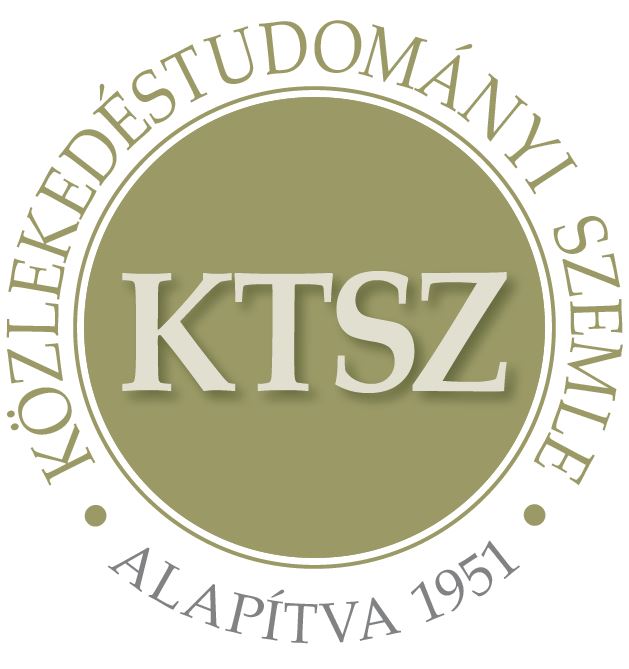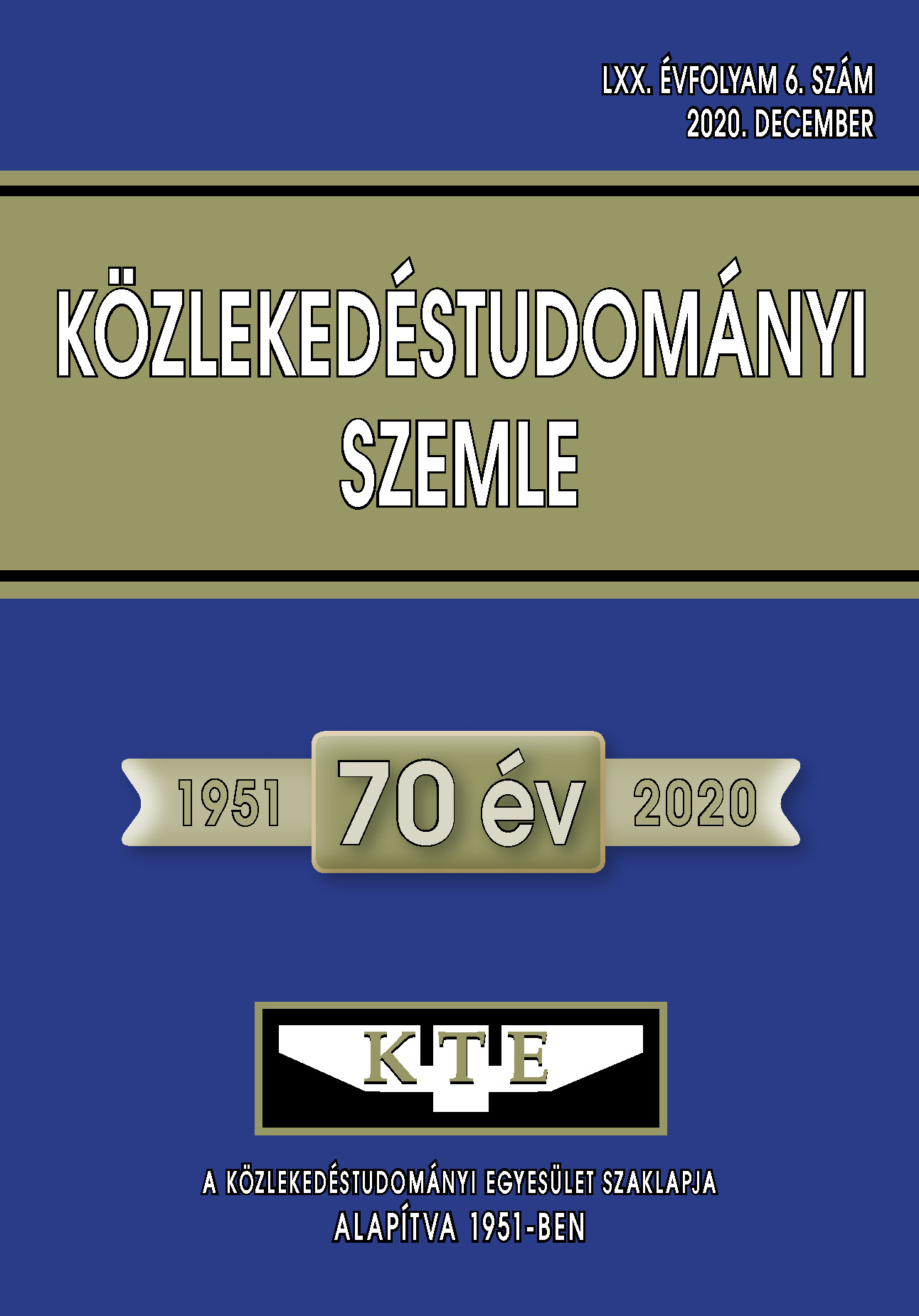The possibilities of using data from the HU-GO electronic toll system for traffic estimation and traffic management purposes
Abstract
The focus of the article is the review of the real-time information necessary for the traffic management of the national road network, the mapping of their availability; on the whole, a deeper exploration of the reusability of the data of the National Toll Payment Services Plc., gathered mainly for the purpose of toll payment – within the framework of the data management possibilities provided by the legislation –, and the examination of their possibilities for traffic analysis and traffic management purposes.
References
"Wikipédia," [Online]. Available: https://hu.wikipedia.org/wiki/Nemzeti_Útdíjfizetési_Szolgáltató_Zrt. [Accessed 27 június 2019].
L. Szűcs, Writer, ITS helyzetkép a szabályozás tükrében. [Performance]. 2015.
AZ EGT VEGYES BIZOTTSÁG 40/2010 HATÁROZATA, 2010.
"datex2.eu," [Online]. Available: www.datex2.eu. [Accessed július 2019].
A Bizottság (EU) 2015/962 felhatalmazáson alapulórendelete a 2010/40/EU európai parlamenti és tanácsi irányelvnek az EU egészére kiterjedő valós idejű, 2014.
B. Makranczi, L. Szűcs, M. Daróczi and Z. Sándor, Interviewees, A NÚSz adattárházak működése. [Interview]. 8 augusztus 2019.
T. Tettamanti , I. Varga and A. Csikós, Közúti Mérések - Eszközök és módszerek a közúti járműforgalom megfigyelésére, Typotex Elektronikus Kiadó Kft., 2016.
N. Daiheng, "Traffic Flow Theory - Characteristics, Experimental-Methods, and Numarical Techniques," 2016.
EMEP/EEA air pollutant emission inventory guidebook, 2018.
M. T. Horváth, Automatikus incidensfelismerő algoritmusok összehasonlítása autópályán, 2012.
Wikipedia, "Autoregressive integrated moving average," [Online]. Available: https://en.wikipedia.org/wiki/Autoregressive_integrated_moving_average. [Accessed 20 09 2019].
M. Abdel-Aty, J. Dilmore and A. Dhindsa, "Evaluation of variable speed limits for realtime freeway safety improvement," Accident Analysis & Prevention, pp. 335-345, 2006.
"What is Vehicle-to-Infrastructure (V2I) Communication and why do we need it?," [Online]. Available: https://www.3m.com/3M/en_US/road-safetyus/resources/road-t ransportationsafety-center-blog/full-stroy/~/what-is-vehicle-to-infrastructure-v2icommunication-and-why-do-we-needit/?storyid=021748d7-f48c-4cd8-8948-b7707f231795. [Accessed 23 09 2019].
F. Arena and G. Pau, "An Overview if Vehicular Communications," MDPI - future internet, 2019. 11(2), 27; DOI: https://doi.org/gf3vvh
I. 19091:2017(en), "Intelligent transport systems - Cooperative ITS - Using V2I and I2V communications for applications related to signalized intersections," [Online]. Available: https://www.iso.org/obp/ui/#iso:std:iso:ts:19091:ed-2:v1:en. [Accessed 23 09 2019].
Articles published electronically are open access (OJS), freely available online and can be downloaded. Authors of articles are not charged any publication or publishing costs (APC). Users have the right to read, download, copy, print, and search the articles, or share the full text with a link.
Authors must declare that their submission has not been previously published in another journal, that financial support has been acknowledged, and that the list of references is complete and accurate, including specification of URLs and DOIs (if available). When submitting a draft article, each author approves the submitted version. Authors guarantee that the article is their original work. Authors are required to participate in the peer review process, follow the advice of reviewers, meet the prescribed deadlines, and, if any, withdraw the submission or correct errors.
All submitted articles are subject to peer review, where the editors request an independent evaluation from at least one expert, ensuring that the reviewer(s) have no conflicts of interest with the authors. The final decision is made by the Editor-in-Chief, who takes into account the evaluations and the suggestions of the editors. The editors and reviewers treat the submission confidentially.
The publisher and editors are committed to maintaining high ethical standards and to preventing publications that involve research misconduct. They follow the COPE guidelines on such ethical issues.
The authors retain copyright and grant the journal the right of first publication under the Creative Commons License (https://creativecommons.org/licenses/by-nc-nd/4.0), which allows others to share the work, while acknowledging the authorship of the work and the first publication in the journal.
The journal archives all published articles, and the journal's owner, the Hungarian Society of Transportation Sciences, will continue to operate the database even if the journal ceases to be published.















